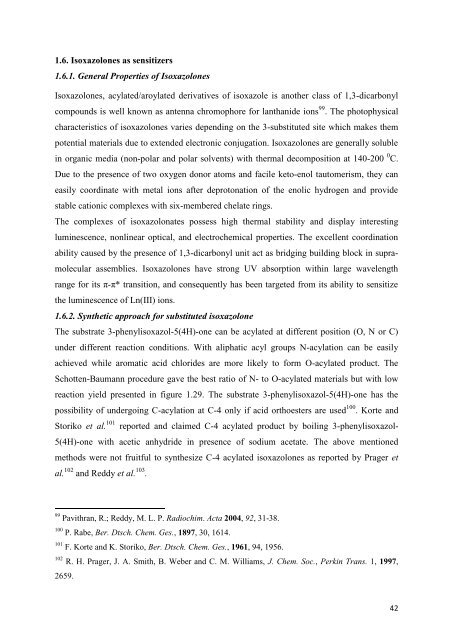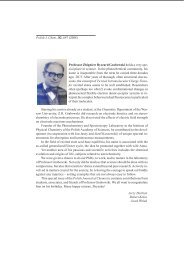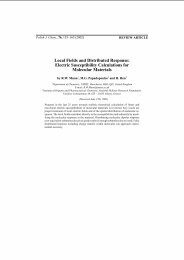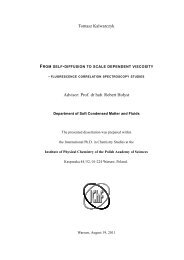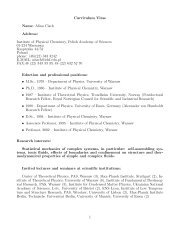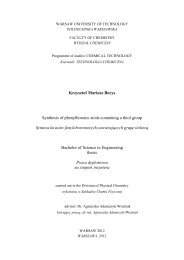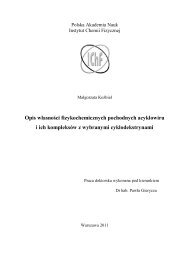Suraj Mal
Suraj Mal
Suraj Mal
You also want an ePaper? Increase the reach of your titles
YUMPU automatically turns print PDFs into web optimized ePapers that Google loves.
1.6. Isoxazolones as sensitizers<br />
1.6.1. General Properties of Isoxazolones<br />
Isoxazolones, acylated/aroylated derivatives of isoxazole is another class of 1,3-dicarbonyl<br />
compounds is well known as antenna chromophore for lanthanide ions 99 . The photophysical<br />
characteristics of isoxazolones varies depending on the 3-substituted site which makes them<br />
potential materials due to extended electronic conjugation. Isoxazolones are generally soluble<br />
in organic media (non-polar and polar solvents) with thermal decomposition at 140-200 0 C.<br />
Due to the presence of two oxygen donor atoms and facile keto-enol tautomerism, they can<br />
easily coordinate with metal ions after deprotonation of the enolic hydrogen and provide<br />
stable cationic complexes with six-membered chelate rings.<br />
The complexes of isoxazolonates possess high thermal stability and display interesting<br />
luminescence, nonlinear optical, and electrochemical properties. The excellent coordination<br />
ability caused by the presence of 1,3-dicarbonyl unit act as bridging building block in supra-<br />
molecular assemblies. Isoxazolones have strong UV absorption within large wavelength<br />
range for its π-π* transition, and consequently has been targeted from its ability to sensitize<br />
the luminescence of Ln(III) ions.<br />
1.6.2. Synthetic approach for substituted isoxazolone<br />
The substrate 3-phenylisoxazol-5(4H)-one can be acylated at different position (O, N or C)<br />
under different reaction conditions. With aliphatic acyl groups N-acylation can be easily<br />
achieved while aromatic acid chlorides are more likely to form O-acylated product. The<br />
Schotten-Baumann procedure gave the best ratio of N- to O-acylated materials but with low<br />
reaction yield presented in figure 1.29. The substrate 3-phenylisoxazol-5(4H)-one has the<br />
possibility of undergoing C-acylation at C-4 only if acid orthoesters are used 100 . Korte and<br />
Storiko et al. 101 reported and claimed C-4 acylated product by boiling 3-phenylisoxazol-<br />
5(4H)-one with acetic anhydride in presence of sodium acetate. The above mentioned<br />
methods were not fruitful to synthesize C-4 acylated isoxazolones as reported by Prager et<br />
al. 102 and Reddy et al. 103 .<br />
99 Pavithran, R.; Reddy, M. L. P. Radiochim. Acta 2004, 92, 31-38.<br />
100 P. Rabe, Ber. Dtsch. Chem. Ges., 1897, 30, 1614.<br />
101 F. Korte and K. Storiko, Ber. Dtsch. Chem. Ges., 1961, 94, 1956.<br />
102 R. H. Prager, J. A. Smith, B. Weber and C. M. Williams, J. Chem. Soc., Perkin Trans. 1, 1997,<br />
2659.<br />
42


